Masterclasses – September 24, 2015
Join thought leaders and luminaries in a small classroom (10-15 students) setting for highly interactive learning. Check back often for program updates.

Lloyd Minor, MD
Dean, Stanford University School of Medicine
LEADERSHIP
Leading an academic medical center: lessons in leadership through uncertainty and change
Stanford University School of Medicine Dean Lloyd Minor will lead a 90-minute master course titled “Leading an Academic Medical Center: Lessons in Leadership through Uncertainty and Change.”
Learning objectives:
- To discuss the principles of strong academic leadership
- To explore when and how an academic leader changes strategies
- To learn how to manage uncertainty.
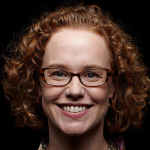
Kirsten Ostherr, PhD, MPH
Rice University
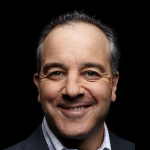
Bryan Vartabedian, MD
Baylor College of Medicine
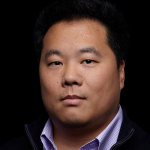
Larry Chu, MD, MS
Stanford University
INSTRUCTIONAL TECHNOLOGIES AND ENGAGEMENT LEARNING DESIGN
Making a MedEd MOOC: The good, the bad, and the ugly
Medical education is poised for some big changes in the 21st century. As digital technologies transform the field of healthcare, doctors and other healthcare professionals need new kinds of training to keep up. Massively Open Online Courses (MOOCs) offer a huge opportunity to bring unique content from your medical school to the rest of the world, potentially reaching hundreds or thousands of learners who could benefit from your expertise. But creating a MOOC takes a big team, a lot of time, and substantial resources. Join Kirsten Ostherr, Bryan Vartabedian, and Larry Chu as they discuss their experiences creating and running MOOCs for medical education.
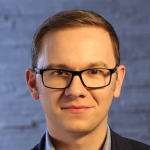
Bertalan Meskó, MD, PhD
University of Debrecen, Hungary
GAPS IN MEDICAL EDUCATION
How might we bring students closer to the curriculum with the help of the digital world?
Learning Labs – September 24, 2015
These focused 60 minute tutorial-style labs aim to help you leave with new instructional skills and ideas. Check back often for program updates.

Larry Chu, MD, MS
Stanford University
INSTRUCTIONAL TECHNOLOGIES
Hacking #MedED tech
The Stanford AIM Lab innovates in the thoughtful use of educational technologies for post-graduate medical education in anesthesia. How might educators without access to local innovation labs thoughtfully incorporate instructional technologies into their curricula? How might educators create engaging blended learning and multimedia content with user-obvious and instructor-centric tools? In this learning lab, Dr. Chu and instructional designers from the Stanford AIM Lab will share their top tips for hacking instructional technologies in medical education.
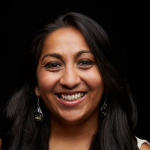
Nikita Joshi, MD
Stanford University
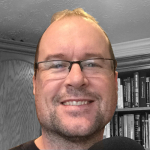
Rob Rogers, MD
UK Healthcare System, Kentucky
INSTRUCTIONAL TECHNOLOGIES
Medical education in the era of connected intelligence: an introduction to social media

Rob Rogers, MD
UK Healthcare System, Kentucky
INSTRUCTIONAL TECHNOLOGIES
Presenter 101: Using presentation software and other digital tools for engaging an audience

Anne Marie Cunningham, MB Bch
Cardiff University, United Kingdom
GAPS IN MEDICAL EDUCATION
Using social media to promote patient safety
What are the pros and cons of dissemination and discussion of patient safety initiatives in social media? Which ethical issues are raised and how might you respond to them? This interactive learning lab will introduce you to several examples which have used different platforms to address this agenda.
Workshops – September 24, 2015
These 90 minute sessions allow for deeper exploration of ideas and technologies and often have multiple facilitators for more one-to-one feedback. Check back often for program updates.

Anne Marie Cunningham, MB Bch
Cardiff University, United Kingdom
ENGAGEMENT LEARNING DESIGN
How to be a super-curator
Learners can feel overwhelmed with the rising amount of publicly available content which is free to access online. Digital curation sites allow educators to present the online materials which they see as most relevant to their students. This interactive workshop will explore some tools which can be used for this task and experience of co-curation with students.
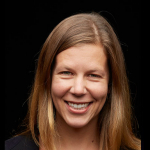
Monika Wittig
LaN/Live Architecture Network
INSTRUCTIONAL TECHNOLOGIES
Intensively more digital more physical: 3D printing medical designs for medical education
3D printing holds tremendous potential to reshape education and practices of design, medical, science and business sectors. Participants will gain an understanding of the advantages of using 3D printing in medical education. Some activities we’ll explore in this workshop include: hands-on use of parametric software to enable participants to grasp how data from a 3D body scan can be used to customize medical design elements–outputting geometrically accurate models for successful 3D printing.
We will also explore how to utilize open-source 3D resources including NIH’s recently launched 3D Print Exchange, outputting 3D models from microscale to macroscale and even 4D printing of self-assembly components.
This workshop is designed to suit a range of participant interests and experience levels and is directed to maximize hands-on collaborative explorations in combination with critical points of discussion. For maximum engagement, please attend with a personal laptop pre-loaded with specified demo software.
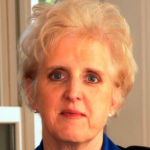
Bonita Ann Pilon, PhD, NEA-BC, FAAN
Professor, Vanderbilt School of Nursing
GAPS IN MEDICAL EDUCATION
Integrating interprofessional education with interprofessional care: learning from the clinic at Mercury Courts experience

Kirsten Ostherr, PhD, MPH
Rice University
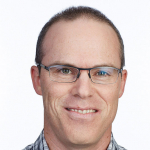
Roni Zeiger, MD
SmartPatients
GAPS IN MEDICAL EDUCATION
Learning from patients: real-time digital storytelling for medical education
The future of medicine is online, connected, and patient-centered. How will the next generation of health professionals learn to put patients’ voices at the center of care? Participants in this workshop will learn methods for bringing real patients’ stories into healthcare education, based on examples from medical, nursing and pre-med courses taught by the workshop leaders.

Rob Rogers
UK Healthcare, Kentucky
INSTRUCTIONAL TECHNOLOGIES
Presentation makeover: How to design beautiful and inspiring educational presentations

Thomas Lee
Symplur
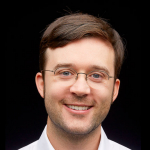
Audun Utengen
Symplur
INSTRUCTIONAL TECHNOLOGIES
Social media for healthcare education: leveraging big data for educational insights
Attendees of the workshop will learn how healthcare providers, patients and other stakeholders use social media, explore what data traces these social interactions create and discuss their limitations. We’ll also uncover how to leverage these big data sources to drive educational research. The second part of this workshop is a highly interactive hands-on tutorial using the Symplur social media analytics platform, Signals. Every participant will be given free access to Symplur Signals. A research problem will be answered by completing a series of tasks using Symplur Signals.

Marie Ennis O’Connor
Stanford Medicine X ePatient Delegate
GAPS IN MEDICAL EDUCATION
Teaching the Rx narrative: story as medicine
Medicine is at heart a narrative activity–the telling and receiving of story. The patient interview is based on the notion that the patient, as story-teller, will share his or her experience, and that the doctor, as active listener, will be able to take that story and make sense of it in the world of science and medicine.
Health care is supposed to build on the story with each contact, but if we don’t know the story, each contact becomes a closed episode of its own, disconnected from every other episode. Fragmentation results as the outcome of a nonstoried approach to health care.
In this workshop, we will explore how the ancient art of storytelling can foster an empathetic healthcare model and generate a framework for a more holistic approach to treating the patient, while at the same time providing a rich source of diagnostic clues.
Narrative medicine represents a storied understanding of health. It’s a return to listening to the patient’s story. Doctors who are trained to listen to the story of the disease need to learn to listen also to the story of the illness. We’ll explore how to incorporate narrative medicine and storytelling into medical education
Accepted presentation proposals
Peer-reviewed oral presentations, learning labs and workshops
Visualizing clinical history taking: a 3D online game utilizing the power of visual metaphor to teach medical students the medical interview
Presenter: Hussain Alyami, Auckland, New Zealand
Track: Instructional Design | Type: Technology Demonstration
History taking is considered the cornerstone of conducting any medical assessment. Adequate history taking is more valuable than physical examination and investigations in reaching diagnoses in two thirds of medical outpatient referrals and is associated with improved outcomes and patient satisfaction. On the other hand, incomplete history taking is associated with frequent misdiagnoses of life threatening conditions including subarachnoid haemorrhage, aortic dissection and epilepsy. This naturally translates into mistreating patients with potentially life threatening unnecessary agents and delays of potentially lifesaving treatment. Unsurprisingly, poor history taking has been identified as one of the main reasons for legal suits against doctors.
MedMetaphoria utilizes innovative visual metaphors delivered as an interactive 3 D online game to teach the medical interview to medical students. It capitalizes on developing visual metaphors based on the latest in the instructional design theory including storey telling, minimizing cognitive load and most importantly activating students’ prior knowledge in order to learn clinical history taking.
In MedMetaphoria, the student assumes the role of a medical student on his/ her elective rotation in Egypt cruising the Nile River in a small submersible. To the student’s surprise, an ice berg appears representing a patient’s presenting complaint. This visual metaphor teaches the students that in medicine, rare or atypical conditions could be facing them in the river of their medical career and that these should be considered as part of the differential diagnosis. Moreover, it also teaches the students that the presenting complaint of the patient is only the tip of the ice berg and that they need to dive under to find the body of the ice berg to uncover the underlying causes of the complaint. In addition, it teaches them that eliminating of the tip of the ice berg does not deal with the causes of the illness. At this stage, the student hears a human voice coming from the ice berg saying “OUCH” which represents a patient being held as a captive inside the ice berg and needing help.
In this session, you will be introduced to visual metaphor informed instructional design and how this could be integrated into your teaching practices. It will also show you a sneak preview of the MedMetaphoria 3D history taking online game.
Editing Wikipedia for med school credit? You can too!
Presenter: Amin Azzam, University of California – San Francisco
Track: Engagement Learning Design | Type: Learning Lab
Admit it—you use Wikipedia extensively. Who doesn’t? But do you use it for medical information? Physicians, medical students and patients all do! So if Wikipedia is the most widely used medical reference in the world, and the third most visited medical reference in the US, why not be a part of increasing the quality of reliable information there by becoming a WikiProject: Medicine Wikipedia editor? This workshop will teach you how.
Medical students are expected learn how to seek, evaluate, and interpret the medical literature, for themselves, their peers, and their patients. First and second-year students learn this in lecture or small group sessions, while third and fourth-year students apply this knowledge on the wards, the former in preparing ward presentations and the latter in guiding their increased responsibility as sub-interns. Writing Wikipedia Medicine articles requires a similar skill-set and carries the “extra” benefit of being durable and beneficial to the public. Furthermore, exposing students to the “underbelly” of how Wikipedia works – how Wikipedia articles are rated, cited, and peer-reviewed – teaches a vital skill, the ability to navigate the rapidly evolving world of information retrieval and production that they will enter as physicians and that their patients already are extensively using now.
A learner-centered and personalized approach to training in medicine–our story
Presenter: Nasir Bhatti, Johns Hopkins Medical School
Track: Engagement Learning Design | Type: Oral Presentation
Work-hour restrictions, increased work load and traditional subjective methods of training are some of the challenges that traditional models of residency training are currently facing in the United States. A time and resource efficient based model of medical training is needed while ensuring the competency of physicians and safety of patients. Studies have shown that a learner-centered model has worked well in other fields of education; however the field of medicine is still lagging behind. This form of personalized training actively involves the learners which serve following objectives.
Identify their learning needs and establishes goals and objectives of the training.
- The trainers guide and help learners achieve those goals using continued objective methods of evaluation and providing formative feedback.
- An opportunity to track their professional development and remediation of any shortcomings during the process.
- A collaborative environment of learning is generated in which students equally share the responsibility for the learning process.
- Their confidence is fostered allowing a graduated increase in the responsibilities ultimately leading to an independent competent practice.
The purpose of this workshop is to increase understanding of newer concepts of personalized training and learners’ autonomy and how these concepts can be practiced by the participants in their organizations with successful outcomes using examples from our practice at the Johns Hopkins Department of Otolaryngology-Head & Neck Surgery.
Design thinking for chronic condition patient engagement
Presenters: Sara Riggare, Karolinska Institute, Sweden, Dr. Ann Lindsay and Dr. Alan Glaseroff, founders Stanford Coordinated Care Clinic, Dennis Boyle, Founding Partner, IDEO Design for Health domain
Track: Gaps in Medical Education | Type: Workshop
Dennis Boyle, Dr. Ann Lindsay, Dr. Alan Glaseroff and Sara Riggare will team up for a 3 hour mini workshop that is based on the teaching and research that we are doing.
Dennis, Ann and Alan have worked together to create and teach a course at the Stanford d.school called “Design for Better Health” or “d.health.” We are in our fifth year of teaching this class. We create small teams of multidisciplinary graduate students that come from all of Stanford’s graduate schools and pair them with patient-volunteers who are trying to manage one or more chronic conditions. These patients are volunteers from the panel of patients served by the Stanford Coordinated Care Clinic. Ann and Alan founded and lead this clinic. Sarah will draw upon her current and ongoing research in Sweden with panels of Parkinson’s patients and panels of Multiple Sclerosis patients who are learning health improvement strategies and tracking aspects of their health. She will also draw upon her extensive experience and research as a PD patient and spokeswoman.
We will give workshop participants an overview of our experiences. We will form and guide small groups to create outlines and features of health course curriculums that fit their backgrounds, level of educational environments, budgets and time constraints. There will be a brief share back by each group of the top line main salient points of curriculums created in the workshop.
Advocacy eElectives: Using online technology to foster rich, asynchronous learning communities during the clerkship years
Presenter: Sarah Davis, University of Wisconsin
Track: Engagement Learning Design | Type: Oral Presentation
This presentation will showcase two four-week online elective courses on clinician advocacy created by patient advocacy educators/patients from the interdisciplinary Center for Patient Partnerships at the University of Wisconsin. It will introduce Medicine X | Ed delegates to simple tools to foster engaging learning in deep affective skills and concrete interventions to advocate for health system improvements. Featuring perspectives of patients, caregivers, providers, and policymakers these courses offer medical and other health sciences students the opportunity to explore how advocacy can make them more effective clinicians. Courses use: collaborative documents to co-create and share knowledge; discussion forums to foster community; podcasts, videos and websites to facilitate resource discovery; and guest “fireside faculty” who enrich discussions with their lived experience. Delegates will have an opportunity to try out these interactive tools and activities.
Reinvigorating the teaching conference: out with Powerpoint and traditional lectures! Engaging participants with collaborative learning and technology
Presenters: Amy Dechet and Courtland Childers, Providence Health & Services
Track: Engagement Learning Design | Type: Workshop
Traditional resident and student conferences have been stand-alone topics presented in a lecture format. This design led to decreased attendance and engagement along with a lack of overarching curricular guidance in our residency didactic program. Two years ago we embarked on a revised didactic curriculum. We implemented a yearlong repeating curriculum divided into weekly theme-based sessions presented during the noon hour. Small group, case-based conferences are organized and facilitated by internal medicine faculty and residents with subspecialty participation. A variety of teaching techniques are employed, including case-based discussions, simulations, evidence-based medicine literature review, and patient panels. A web-based learning management system houses faculty selected didactic material and encourages self-directed learning through pre-conference quizzes. In this workshop, we will first summarize our noon conference redesign and then provide opportunities for participants to generate and share ideas for resident and student didactic innovations that can be tailored to each institution’s unique needs. Each participant will be encouraged to generate an action plan for further consideration upon return to his/her institution with a repository of ideas and contacts for ongoing online discussion.
Perspectives in lifelong learning: Emerging technology in continuing education in medicine and healthcare
Presenter: Alexander Djuricich, Indiana University
Track: Gaps in Medical Education | Type: Oral Presentation
Previous literature demonstrated limited effectiveness of Continuing Medical Education (CME) to improve patient care. Traditional live courses have provided an opportunity for dissemination of new knowledge, but the link between this and improved patient care outcomes has been difficult to demonstrate. Recent newer technologies in CME provide new ways to consider how physicians and other health care providers are educated, and more importantly, how this education can impact patient outcomes.
The presenter will provide a brief background into adult learning theories, and will engage the audience in how educators can optimize such theory in CME programming. The use of patients and storytelling, as demonstrated in previous MedX conferences, will be highlighted. Participants will contribute to the discussion in an exploration of technology best practices, and how to close the gap between what HCPs know and what they do with their patients.
Opportunity for small group discussions, with a focus on “tweeting the meeting”, will explore technology “do’s and don’ts” with respect to continuing education for healthcare providers. Each participant table will complete a worksheet with explicit objectives. This will lead into a larger group report out and discussion of how to utilize emerging technology in CME and other continuing education venues. At the conclusion of the workshop, participants will each receive “take home tools” for lifelong learning delivered through means of technology.
Building and implementing a national health informatics course for Canadian pharmacy students
Presenter: Kelly Grindrod, University of Waterloo, Canada
Track: Gaps in Medical Education | Type: Oral Presentation
The objective of this learning lab is to describe the design and implementation of a national health informatics course for pharmacy students. In 2013, the Association of Faculties of Pharmacy of Canada (AFPC) partnered with the federally funded Canada Health Infoway to boost the adoption of technology by pharmacists. Slow uptake of technologies such as bar coding and automated dispensing in pharmacies have shown that pharmacists are reluctant adopters of new innovations. The AFPC is a network of all 10 Canadian faculties of pharmacy, including 2 french language programs. In 2013, the AFPC identified experts to author content on topics such as privacy, electronic documentation (charting) and consumer health informatics. A team developed the content into online modules using the learning management platform Moodle. The modules were reviewed by a diverse team of students and content experts and launched in 2014. To encourage the adoption of the modules across all pharmacy programs, the AFPC has identified a peer-leader in each of the 10 faculties. The peer-leader’s role is to identify courses where the modules can be implemented in each curriculum and to support instructors in using the content. Implementation and evaluation is currently underway, as is the development of similar programs for nursing and medicine.
Visual design & healthcare: transcending language and cultural barriers through iconography
Presenter: Heather Holmes, Tapgenes
Track: Engagement Learning Design | Type: Oral Presentation
Even with the best of medical care, patients and their caregivers often feel overwhelmed & confused about how to manage their health challenges and do not understand their risks or how to identify patterns of shared diseases within a family. Communication problems between patients and health care workers are far too often at the root cause of inadequate medical treatment, unnecessary errors, excess pain, and even death. While there are lots of reasons for these communication problems, there are also lots of (often inexpensive and simple) things that can be done about them.
Helping patients and individuals understand their health and their risks through iconography is a powerful and inexpensive way to improve health literacy and comprehension. In this Engagement Learning Design track, we will expose attendees to the power of iconography in everyday life and show how symbols, colors, and icons influence everyday life without words or complex explanations and how they are at the center of design for TapGenes.
The goal of this talk is to help challenge the minds of attendees to see how simply they can convey important information through symbols & icons. The foundation of this session is based off of Heather’s experience of living in Asia while working in developing countries where symbology plays an essential role in day-to-day life. We’ll help attendees connect the dots between symbols & iconography in healthcare and show how those design elements impacted & influenced the design and UI for TapGenes.
TapGenes connects the dots between your family health history, your lifestyle, and your health by combining that data into an easy-to-understand genealogy health tree. Its purpose is to monitor and identify health risks before there’s a problem so you can take preventive action, manage health conditions, & to provide on-demand information in case of an emergency.
Patient engagement techniques for your toolkit
Presenter: Meredith Hurston, Stanford Medicine X ePatient Advisor
Track: Engagement Learning Design | Type: Learning Lab
This learning lab will focus on techniques that prompt patients and families to become more active instead of passive participants in their healthcare. There will be brief discussion of how this positively impacts patient safety. Studies have shown that patients are more satisfied with their care when they are given tools to support and facilitate dialogue with providers. In this session, I will demonstrate some digital tools such as the use of Evernote for patient journaling and note keeping. I will also review the utility of Doctella.com for procedure information, preparation checklists and dialogue prompts. There will also be an interactive demonstration of motivational interviewing techniques. Finally, there will be an assessment of the providers attitude toward patient engagement. Attendees will walk away with several ideas, digital tools and resources to develop their own unique tooIkit. Is my hope that these techniques and tools will supplement what is taught in traditional medical education.
Enhancing medical education with a virtual patient
Presenter: Anuradha Khanna, Loyola University
Track: Instructional Technologies | Type: Technology Demonstration
EyeSim is an interactive, stereo anatomic model of the eye and a virtual patient with reactive pupils and ocular motility exam. Pupil, cranial nerve and ocular muscle dysfunction options are built in for deliberate practice. There is also a color coded, interactive visual pathway simulation.
This simulator can be used in a classroom setting with a stereo projector or in a simulation lab setting with desktop zSpace stereo displays. Instead of a patient, the learner would be practicing on a virtual patient and it can be used for testing as well. Also, the content is 2D/3D compatible and works on smart phones and tablets as well enabling self-study.
This simulation holds value for medical education in many specialties like ophthalmology, neurology, neurosurgery, primary care, emergency medicine etc. It’s an educational tool for educators and learners to enhance their educational curriculum. It provides a medium for concept clarity and for deliberate practice.
Using “flipped classroom” model for teaching
Presenter: Viji Kurup, MD, Yale University
Track: Engagement Learning Design | Type: Learning Lab
Medical Educators face a number of challenges in training a new generation of residents with unique learning styles and expectations. The ‘Flipped Classroom’ model seems to be a good tool when faced with time constraints to allow in depth learning of a topic, It allows the learner to assimilate basic information from material placed online and frees the teacher to use the face to face interaction time for training the learner in advanced concepts involving higher order cognitive skills. This model involves a redesign of course curriculum as well as use of multiple teaching tools and intelligent use of existing technology in your institution.
This lab will be useful for educators in any field as the skill in transferable across specialties. After completing this activity the participant will be able to:
- Describe the process of flipping the classroom
- Name the pros and cons of using the flipped classroom approach
- Be able to create a course using the flipped classroom model
The fakebetes challenge: the patient as educator
Presenters: Michelle Litchman, PhD, FNP-BC, University of Utah and Cherise Shockley, Diabetes Community Advocacy Foundation
Track: Engagement Learning Design | Type: Oral Presentation
One of the most difficult topics to teach is the real-life challenges of living with a chronic condition. Healthcare providers and students don’t typically fully understand what it is like to live with a chronic condition, unless they or someone close to them lives with that chronic condition. This lack of tacit knowledge can translate in patients feeling like their healthcare team doesn’t “get it”, leading to frustration. The concept of living well with a chronic condition cannot always be taught, however, it can be experienced to some degree. This presentation will describe a pilot project, The Fakebetes Challenge, which was developed to utilize the expertise of individuals with diabetes to teach healthcare providers and students about day-to-day diabetes management skills.
Healthcare providers and students who volunteered to participate in the Fakebetes Challenge were paired with individuals living well with diabetes who were actively participating in the Diabetes Online Community. Dyads were encouraged to communicate using a number of technology sources, including email, text message, and social media. The healthcare providers and students were provided with glucose test strips, fake insulin (saline), tools for fake insulin administration (syringes or insulin pump), and rapid glucose. Throughout the challenge the healthcare provider/student would test their own glucose and take fake insulin based on predetermined insulin to carbohydrate ratios, correction factors, and blood glucose targets. Since healthcare provider/student glucose levels were always within normal range, the individual with diabetes would provide glucose values (either text or visual) and symptoms for the healthcare provider/student to act upon. Further, individuals with diabetes helped healthcare providers/students trouble-shoot glucose levels, provide advice about carbohydrate counting, and assist with other scenarios that could impact glucose levels.
All parties found the Fakebetes Challenge to be rewarding. Specifically, healthcare providers/students reported a marked difference between textbook knowledge and critical thinking required for real-life diabetes management. Further, healthcare providers and students reported gaining a better understanding of the psychosocial aspects of living with diabetes and planned to be more engaged with their patients. Individuals with diabetes noted that while the Fakebetes Challenge did not allow for all of the physical and psychological challenges that were experienced day-to-day, they were pleased to see there were healthcare providers who cared enough about their patients to participate in the Fakebetes Challenge. There is value in pairing healthcare providers/students with individuals with chronic conditions where the patient is the educator. The concept of the Fakebetes Challenge could be utilized for other pedagogical approaches.
Reducing the distance between learners: eConferences to standardize learning on clinical rotations
Presenter: Phillip Malouf, Touro University
Track: Engagement Learning Design | Type: Oral Presentation
Background: Undergraduate medical education is increasingly reliant on community sites to provide clinical experiences. This presents some fundamental problems for students rotating at remote sites: variability in educational activities, and separation from campus and peers. At our institution, this led to the development of weekly small group conferences similar to traditional morning report with one exception: most students participate online from their community rotation sites.
Objective: We hypothesized that students’ feel the online conferences help refine their patient presentation and differential diagnosis, and maintain a beneficial connection with their peers and campus.
Design/Methods: 135 medical students were surveyed after the completion of their clinical rotations. Student shelf exam scores in Pediatrics were recorded to determine any differences between students who participated in person versus online.
Results: 89 students (66%) responded with 65% of respondents having participated remotely from their community site. Most respondents agreed that the conferences helped them feel connected to campus (64%) and their peers (66%). Respondents felt the strongest aspect was helping with the development of a differential diagnosis (80% responded that the conferences helped fairly/very well in this regard). Of 34 students who attended remotely and reported having also participated in a live morning report style conference, 88% felt that the online conferences provided an equal educational benefit to live conferences. Shelf examination scores did not differ between students who attended in person (80.76±4.34) or remotely (80.82±6.23, p = 0.965).
Conclusions: Students feel that interactive weekly online conferences help with their development of a differential diagnosis. Most students also feel that the conferences help them connect with their campus and peers. The educational impact of web-based conferences is felt to be similar to live morning report style conferences, and participating in conferences remotely does not appear to affect shelf exam performance compared with attending in person.
Information management for lifelong learning
Presenter: Neil Mehta, Cleveland Clinic and Roy Phitayakorn, Massachusetts General Hospital
Track: Gaps in Medical Education | Type: Oral Presentation
Medical education has an abrupt transition from formal and organized learning in the preclinical years to self-directed informal learning in the clinical years, GME and in clinical practice. Very few students learn an approach for efficient self-directed learning. They often depend on case-based learning and are not aware of the need for proactive scanning to stay up to date.
We will provide a brief overview of the neuropsychology of memory and then demonstrate various technology tools that can be leveraged to develop an information management workflow to support effective lifelong learning. Using a detailed handout, participants will be able to practice using these tools to create customized feeds of information, process and organize these for cloud storage and then set up easy retrieval of the information at point of care from any web enabled device. Finally the participants will engage in a large group discussion on strategies for training learners on using this model to support lifelong learning across the continuum of their medical training and practice.
The tools and workflow would be applicable to any healthcare professional. While Prensky presented the concept of Digital Natives, our personal experience is that the Millennial Generation may be very comfortable using technology for daily tasks like communicating, they require direction on using technology for learning.
Map for medical education
Presenter: Chethan Sarabu, Rutgers Robert Wood Johnson Medical School and Erik Shwarts, UC Davis Medical Center
Track: Instructional Technologies | Type: Oral Presentation
An important aspect of education in medicine is connecting concepts from the first year of medical school to the clinical practice of medicine and vice versa. Introductory basic science courses tend to lack clinical encounters that medical students are eager to experience. In the clinical years learning takes place on the fly as information is often accrued in a piecemeal fashion. This dynamic learning environment may be more stimulating than sitting in a classroom; however, it can be challenging to organize and navigate the information. Map for Medical Education is a concept learning and teaching platform that visually connects this knowledge. It is a personal digital notebook that grows with the learner and allows for easy navigation between the basic and clinical sciences.
This presentation is for anyone interested in how to best organize medical education either from the learning, teaching, or course administrating perspective. It is a concept designed and developed by two medical students who are currently in residency. We are passionate about developing this digital platform that would allow a physician to quickly and easily browse their own annotated notes instead of searching the internet.
The case for Google Glass and first-person video in medical education
Presenter: Warren Wiechmann, University of California – Irvine
Track: Instructional Technologies | Type: Learning Lab
The use of video in medical education is not new or unique — from lecture capture, studio production, to fixed-camera recordings of Objective Structured Clinical Examinations (OSCEs). “Action cameras” like the GoPro Hero and the development of optical head-mounted displays such as Google Glass have made it easy to capture first-person point-of-view footage. Early adopters of these technologies such as Drs. Rafael Grossmann, Pedro Guillen, Homero Rivas, and Pierre Theodore have developed compelling use cases.
Despite the relative commercial failure of Google Glass as a consumer project, there is still strong interest in its use as an adjunct in medicine and healthcare. As the number of specific healthcare use-cases continue to climb and the number of healthcare-focused Glass software providers grows, more and more institutions are starting to consider piloting Google Glass. The three main deployment areas for Glass include data manipulation (EMR integration, checklists), video/photo documentation (for assessment, teaching, or for the EMR), and video communication (telemedicine or teleconsults). Beyond the issues of end-user adoption and the actual usage of the device, there are well-documented concerns from different stakeholders across the healthcare institution.
At UC Irvine, we launched an ambitious Google Glass pilot with 10 units with planned use cases for the basic and clinical sciences experiences. After a number of small experiments with Google Glass, we have developed and reiterated upon the following primary use cases – as an assessment tool of student procedural competence during their OSCE, as an assessment tool for resident procedural competency, a communication/streaming tool that connects healthcare partners at a distnace. and as a feedback tool for students to see themselves “through a patient’s eyes.”
This 60-minute will focus on these primary use cases and the pilot data that we have gathered to date. We will share and discuss other areas for implementation into a medical, nursing, or resident curriculum. The discussion will highlight Google Glass, but dedicated time will be spent highlighting dedicated strengths and weakness of other first-person recording devices such as GoPro. Finally, we plan to share the logistics of our hospital approval process, HIPAA consent and data security clearances, and other lessons learned about the technology.
Expected Learning Objectives:
- Participants will learn about specific use-cases and case-studies of Google Glass implementations in clinical and teaching environments
- Participants will learn about barriers to implementation of new technologies and strategies to overcome them
- Participants will be able to build a framework for assessing other emerging technologies in their institutions
Describe the Anticipated Audience Participation: The audience will receive discussion points based on the case-studies described by the panel. They will be encouraged to discuss amongst smaller groups and share their institutional perspectives on the points, and then share back with the larger group.

